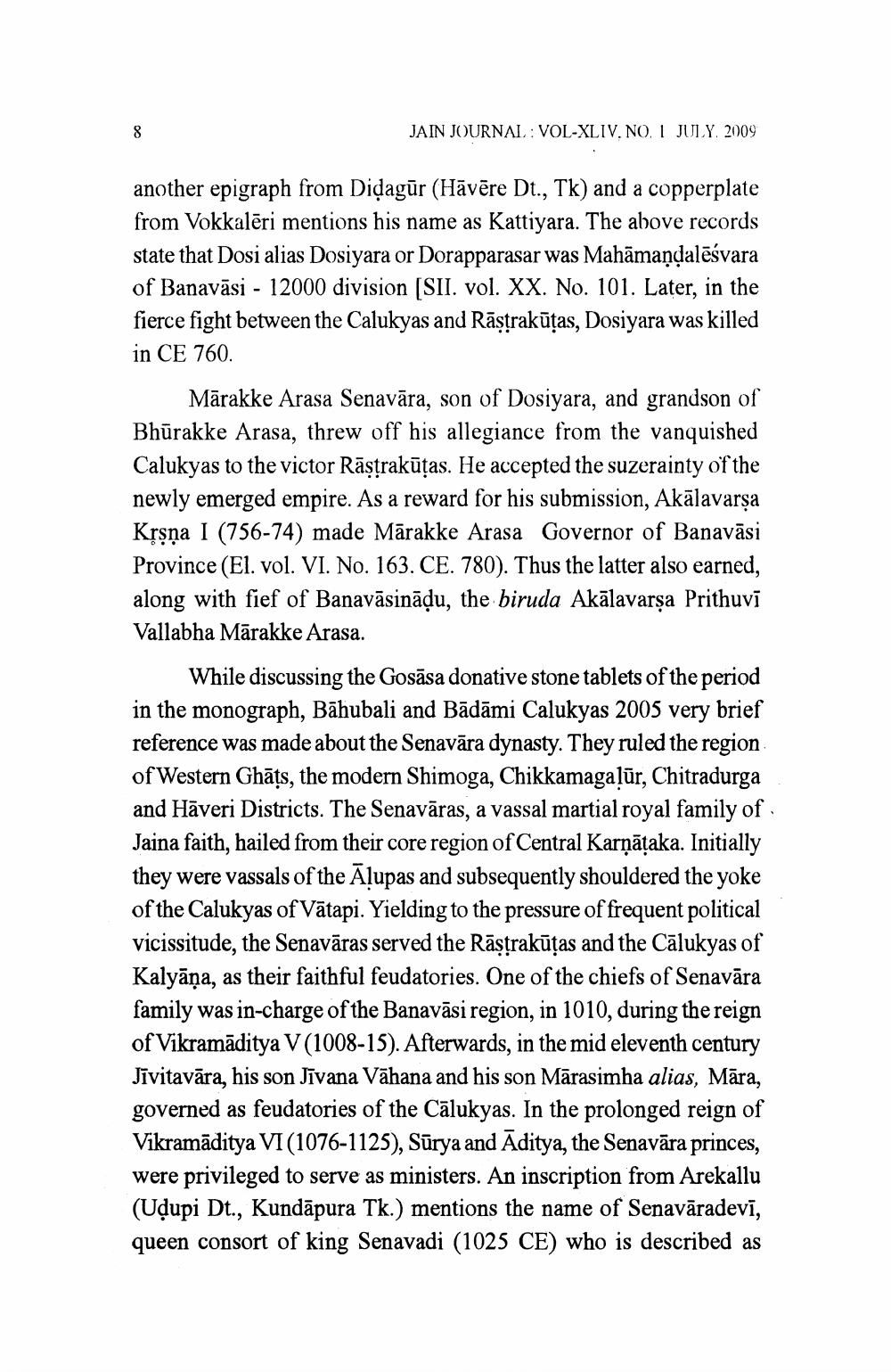Book Title: Jain Journal 2009 07 Author(s): Satyaranjan Banerjee Publisher: Jain Bhawan Publication View full book textPage 8
________________ JAIN JOURNAL: VOL-XLIV. NO. I JULY 2009 another epigraph from Didagūr (Hāvēre Dt., Tk) and a copperplate from Vokkalēri mentions his name as Kattiyara. The above records state that Dosi alias Dosiyara or Dorapparasar was Mahāmaņdalēśvara of Banavāsi - 12000 division (SII. vol. XX. No. 101. Later, in the fierce fight between the Calukyas and Rāstrakūtas, Dosiyara was killed in CE 760. Mārakke Arasa Senavāra, son of Dosiyara, and grandson of Bhūrakke Arasa, threw off his allegiance from the vanquished Calukyas to the victor Rāstrakūtas. He accepted the suzerainty of the newly emerged empire. As a reward for his submission, Akālavarşa Kysņa I (756-74) made Mārakke Arasa Governor of Banavāsi Province (El. vol. VI. No. 163. CE. 780). Thus the latter also earned, along with fief of Banavāsināļu, the biruda Akālavarşa Prithuvi Vallabha Mārakke Arasa. While discussing the Gosāsa donative stone tablets of the period in the monograph, Bāhubali and Bādāmi Calukyas 2005 very brief reference was made about the Senavāra dynasty. They ruled the region of Western Ghāts, the modern Shimoga, Chikkamagałūr, Chitradurga and Hāveri Districts. The Senavāras, a vassal martial royal family of Jaina faith, hailed from their core region of Central Karņāțaka. Initially they were vassals of the Alupas and subsequently shouldered the yoke of the Calukyas of Vātapi. Yielding to the pressure of frequent political vicissitude, the Senavāras served the Rāstrakūtas and the Cālukyas of Kalyāņa, as their faithful feudatories. One of the chiefs of Senavāra family was in-charge of the Banavāsi region, in 1010, during the reign of Vikramāditya V(1008-15). Afterwards, in the mid eleventh century Jīvitavāra, his son Jīvana Vāhana and his son Mārasimha alias, Māra, governed as feudatories of the Cālukyas. In the prolonged reign of Vikramāditya VI (1076-1125), Sūrya and Aditya, the Senavāra princes, were privileged to serve as ministers. An inscription from Arekallu (Udupi Dt., Kundāpura Tk.) mentions the name of Senavāradevī, queen consort of king Senavadi (1025 CE) who is described asPage Navigation
1 ... 6 7 8 9 10 11 12 13 14 15 16 17 18 19 20 21 22 23 24 25 26 27 28 29 30 31 32 33 34 35 36 37 38 39 40 41 42 43 44 45 46 47 48
